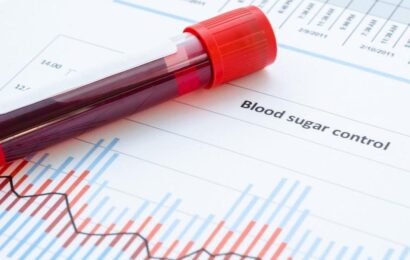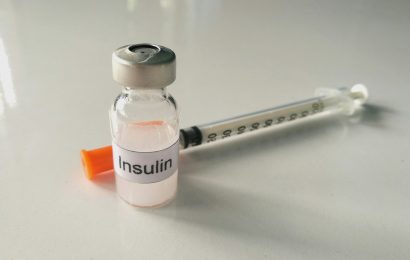If you’ve been reading headlines lately, you’ll know that sugar is the new villain when it comes to obesity, inflammation, and chronic disease. Yet we Americans crave the sweet stuff. According to government figures, sugar has infiltrated the American diet so much that, on average, we eat about 152 pounds of it a year. Compare that to what we were eating 200 years ago: only 2 pounds of sugar per year. The 2015–2020 Dietary Guidelines for Americans recommends we limit calories from added sugar to less than 10% each day. That’s about 200 calories worth, or roughly 13 teaspoons of sugar for someone consuming 2,000 calories per day — on average, we get closer to 680 calories worth, or nearly 43 teaspoons of sugar each day.
Where does all the sugar come from?
More than a third of our sugar intake is in the form of sugary drinks, including non-diet sodas, sweetened ice tea, sports drinks, and other soft drinks. Table sugar accounts for about 25% of our intake. And the rest comes from baked goods, desserts, candy, fruit drinks, and breakfast cereals.
Sugar by any other name is still sugar…
Some foods and beverages are obviously full of sugar. But sugar lurks in many foods that you’d never suspect. Examples include:
• Pasta sauce
• Ketchup
• Salad dressing
• Coleslaw
• Frozen dinners
You can learn how to spot sugar by scanning the ingredients list of your food items. The following terms indicate the presence of sugar in a food or beverage:
• Glucose
• Dextrose
• Fructose
• Sucrose
• Maltose
• Lactose
• Honey
• Syrup (corn, maple, cane sugar, high-fructose)
• Molasses
• Brown sugar
Why do we crave sugar?
It’s natural for people to enjoy the taste of something sweet, and this preference starts at birth. Babies are born liking the taste of sweet and disliking the taste of bitter. Scientists believe that our sweet tooth dates back to our prehistoric ancestors, who gravitated to ripe fruit as a source of energy. In addition, eating sugar is pleasurable, and not just because it tastes good. When we eat sugar, endorphins (those feel-good chemicals) are released, along with serotonin, another chemical that regulates happiness and mood. Some people gravitate toward sugar for emotional reasons, too — feeling sad, depressed, anxious, or bored may trigger the desire to stifle these emotions by reaching for something sweet (remember that eating something sweet can make you feel better, at least temporarily). And force of habit can leave us wanting sugar on a regular basis — for example, growing up eating dessert after dinner every night, or coming home from school to a plate of homemade cookies. People who have diabetes may crave sugar when their blood sugar levels drop too low; “treating” the low with sugar helps to bring blood sugar back to a safe level.
Enjoying something sweet now and then isn’t an issue for most people, and evidence-based nutrition guidelines (including those for people who have diabetes) recognize this. But a constant intake of sugar can lead to a host of medical problems (for example, obesity, heart disease, insulin resistance, high blood pressure, some types of cancer) and some health experts believe that sugar has addictive properties: the more you eat, the more you crave. For this reason, many people choose to avoid it altogether, and perhaps for good reason.
How can you curb your craving for sugar?
The good news is that you can decrease your desire for sugar. It’s difficult to completely cut sugar out of your diet, in part because sugar is naturally found in some foods, such as fruits and vegetables. However, if visions of sugarplums continue to dance in your head and you want to put a stop to them, the following steps can help:
Clean out your cupboards (and your fridge). Keeping cookies and candy bars stashed in your cupboards isn’t going to help those cravings go away. Make a clean sweep of those sweets. If you live with others who enjoy them, ask them to keep their treats hidden away.
Ditch the candy dish at work. The workplace is often another environment that can feed into sugar cravings. People may keep a dish of candy on their desk, or bring in doughnuts or other treats and leave them in the kitchen. Depending on your relationship with your coworkers, you might find that asking them (nicely) to keep their candy in their desk drawer works. Or, consider talking with your boss or human resources director about instituting a healthier workplace food policy.
Eat regular, balanced meals. Cravings can hit hard if you tend to skip meals and/or if your meals aren’t balanced with healthy carbs, protein, and fat. Try to eat your meals at regular times.
Plan for snacks. Not everyone needs snacks, but you’re reaching for a candy bar mid-afternoon, your energy level (and maybe your blood sugar) is likely taking a nosedive. Go for a healthy snack that contains some protein, such as an apple with a small handful of almonds, a hardboiled egg, or a small dish of plain Greek yogurt mixed with berries.
Train your brain. Forming new habits takes time, but it’s doable. When a craving strikes, try distracting yourself. This can mean going for a short walk, drinking a glass of water, or calling a friend for a chat.
Don’t be fooled by sugar substitutes. Sure, choosing a diet soda over a regular soda means fewer calories and zero effect on your blood sugar. But when it comes to cravings, going for sugar-free (or no sugar added) foods and drinks won’t lessen them — and may even prolong them.
Get your sleep. Short-changing yourself on sleep can affect your weight and your blood sugars, and can also make it much harder to kick that sugar craving to the curb. Make a point to aim for 7 to 8 hours of sleep each night.
Plan for a sweet treat. In some instances, completely depriving yourself of something can cause you to want it that much more. If you give yourself permission to enjoy something sweet — say, a piece of dark chocolate or a small scoop of ice cream — now and then, your sweet tooth may be satisfied and that pesky craving may fade away.
Reward yourself. Give yourself a well-deserved pat on the back if you try any of the above steps. Go to a movie, get a massage, or curl up with a good book.
Talk with your dietitian or health-care provider if you find that your cravings are becoming more noticeable or aren’t going away.
Want to learn more about managing food cravings with diabetes? Read “Craving Carbs” and “Diabetes Hunger and Food Cravings.”





